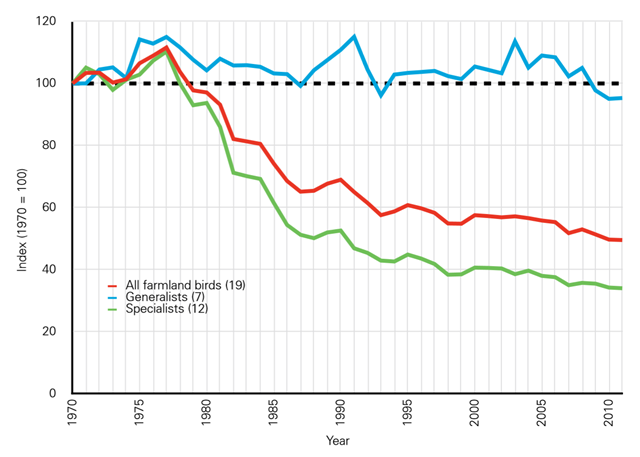Graph of the Day: UK Farmland Bird Indicator, 1970-2011
The UK Farmland Bird Indicator, 1970-2011, showing differing trends for specialist and generalist species. Data are from the RSPB, BTO, JNCC, and Defra. The numbers in brackets refer to the number of species in each group. Specialist species have decline by over 60% in 40 years. Graphic: RSPB 22 May 2013 (RSPB) – Trends in farmland birds, together with those of widespread bats and butterflies, are used as indicators of the state of biodiversity. Farmland bird populations declined rapidly during the 1970s and 1980s, and by 2000 their numbers were just half what they were in 1970. There has been no subsequent recovery, and some species, such as the turtle dove, have continued to decline rapidly. The only bat monitored over the same period was the pipistrelle, which showed an even steeper decline. However, larger-scale monitoring of more bats shows that several species have increased or remained stable since 1997, albeit at lower levels than those seen historically. Butterfly populations show considerable year-to-year variation, but the overall trend shows a 32% decline in the last 21 years. Within the indicator, birds can be classified as specialists (heavily reliant on farmland for food and breeding), or generalists (those able to use other habitats). Specialist birds have declined more severely, possibly because they are less able to adapt to their changing environment. It is a similar story for moths, carabid beetles and plants: 64% of farmland moths and 70% of carabid beetles studied are declining, with few species increasing.
